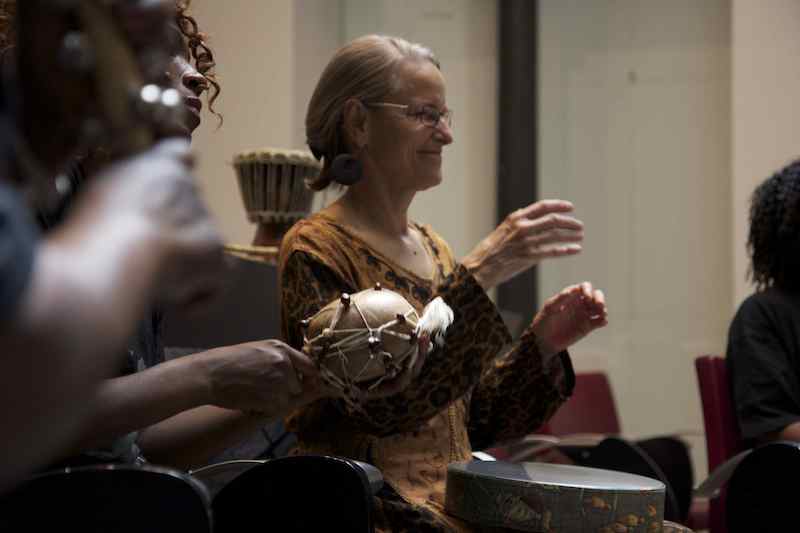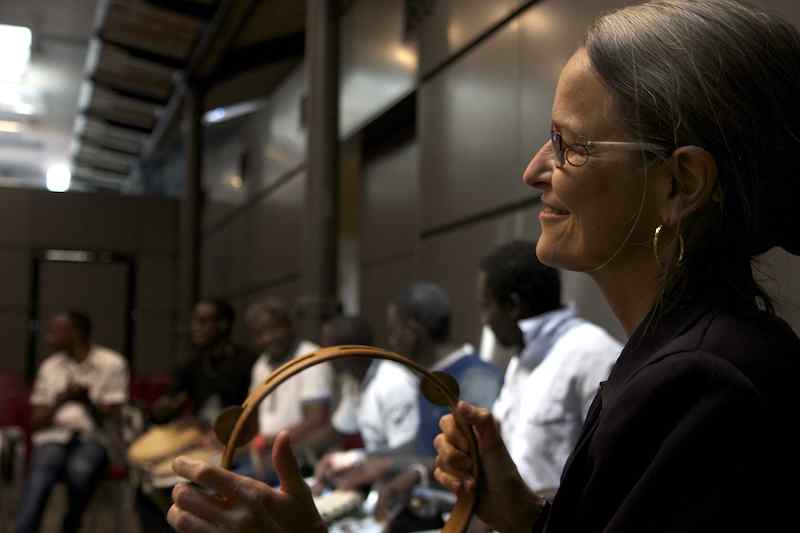Music Therapy

Sometimes dealing with challenging life situations and restoring calm to our chaotic lives requires more than traditional psychotherapy. Music therapy (MT) is a support therapy. It can be a valuable option, facilitating healing with a variety of issues, including depression and anxiety.
Research has found that in addition to some form of psychotherapy, MT can be a catalyst for people to better express their emotions, reflect on their inner feelings, reveal their true strengths and even enhance communication skills when words alone just are not enough or too much.
Music is a language. Music, as are all sounds, is invasive. Even in the case of deafness, one senses sound. Hearing is a whole body, a sensory experience, not only utilizing the ears. The vibrations penetrate our bodies making the body vibrate sympathetically. Our physiology and everything we are made of is rhythmic or musical. Our heart beats rhythmically. We breathe rhythmically. Therefore, every aspect of our being can be translated and expressed in musical terms.
One does not need to have any musical background to do MT. Whether you’re a music lover or not, whether you sing off key or like a canary, when you experience music in a music therapeutic setting, it can be transformative. Scientific experimentation (evidence based research) using musical interventions found MT to help various profiles of clients.
For example, MT used with patients who have suffered a brain-injury can stimulate the building of cognitive skills through call and response techniques to the musical sounds played on simple instruments. MT can be used to lessen the effects of post-traumatic stress disorder (PTSD) during group therapy, where talk therapy may re-traumatize the client. And, with activities such as drumming, Alzheimer’s patients reduce stress levels. In the particular instance of Alzheimer’s disease, remembering music and songs from the client’s past keeps the brain active longer, enhances relationships and improves affect.

It has been found that we naturally (phylogenetically) connect to others by picking up on these individual body rhythms. Through these we are able to synchronize and evaluate who is in front of us. Friend or foe? This is called body language. As therapists, we learn to recognize someone’s body rhythms, language and emotions mirroring these musically to facilitate connection to clients. This is called the ISO principle and the act of connecting is called ‘entrainment’. For example, with autism, where the client has extreme communication skill limitations and therefore difficulty connecting both linguistically and visually, a music therapist can connect to the client musically and begin building a relationship. Music is a right brain activity while language is left-brain. The use of music provides an alternative pathway to reach a patient. Together we create a new ‘language’.
Music is prevalent in all societies and is used also comercially, such as advertising, film and TV, to generate a broad range of emotional and psychological responses. So, too, there are many forms of music therapy.
Analytical Music Therapy created by Mary Priestley, uses music to access the subconscious and its memories through free improvisation and dialogue. Diane Austen’s Vocal Psychotherapy works to access emotional content through singing. Free-improvisation, developed by Juliette Alvin, turns music into a metaphor enabling both client and therapist to understand the patient’s present life experiences. Free improvisation is effective when working with certain developmental disabilities where language is limited. Guided Imagery (GIM), created by Helen L. Bonny, uses listening to prerecorded music to access emotions and memories as an alternative to psychotherapy.
As you can see, music is a language and a tool and its applications are limitless. Depending on the client, their needs and their specific pathology, we chose the voice, the piano, the guitar and/or simple percussion instruments. Every client is unique. Therefore, each client is met where they are (ie. their psychological needs, their age, physical limitations, emotional state and cognitive skills). I would like to underline this fact and emphasize that it is paramount to always show the maximum of respect.
MT is a process created after a thorough evaluation of the client’s needs and the therapeutic objects. The initial assessment of the client many times is decided in collaboration with the patient’s psychiatrist/psychologist, social worker, doctor and/or family. From this dialogue the therapist then formulates a specific treatment plan. Issues are discussed when appropriate with the other caregivers and the patient’s progress is assessed throughout the treatment for modification if need be.



